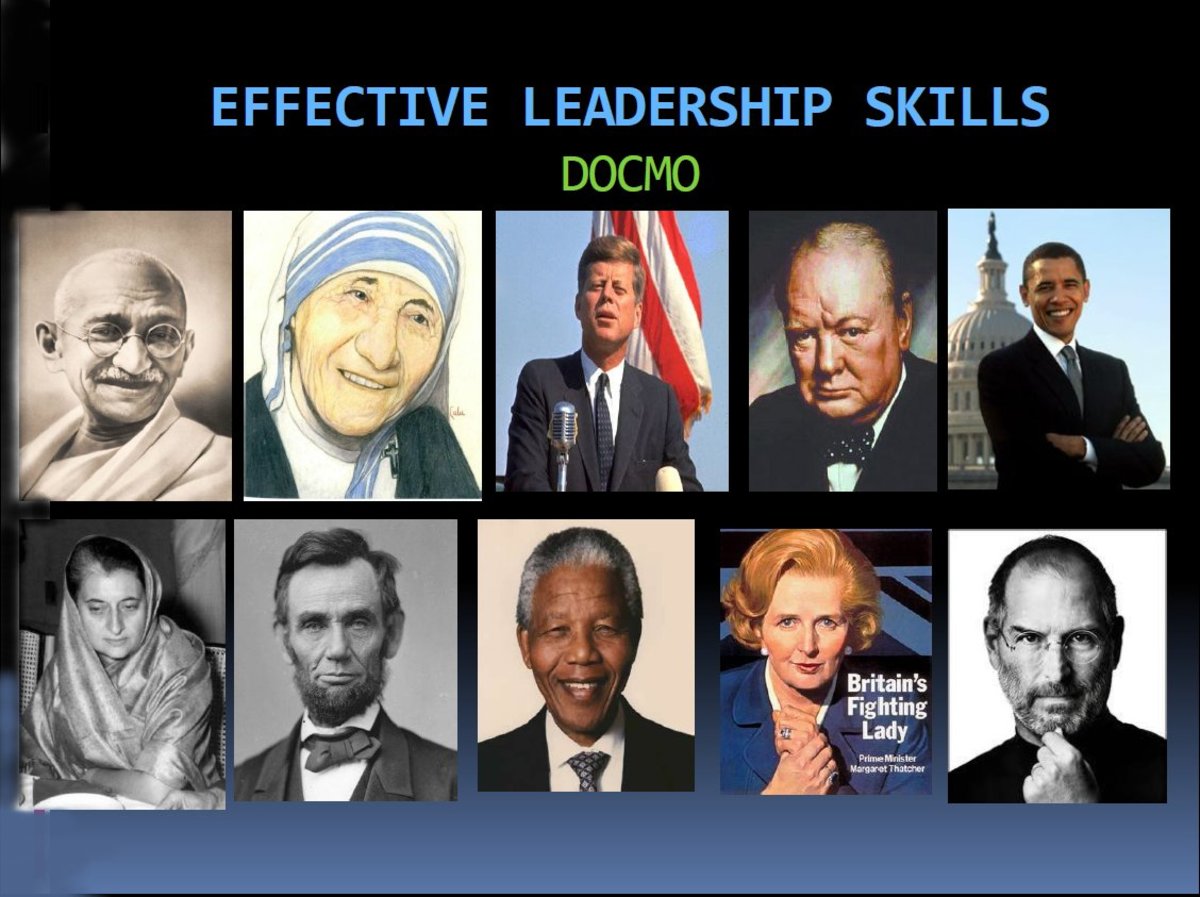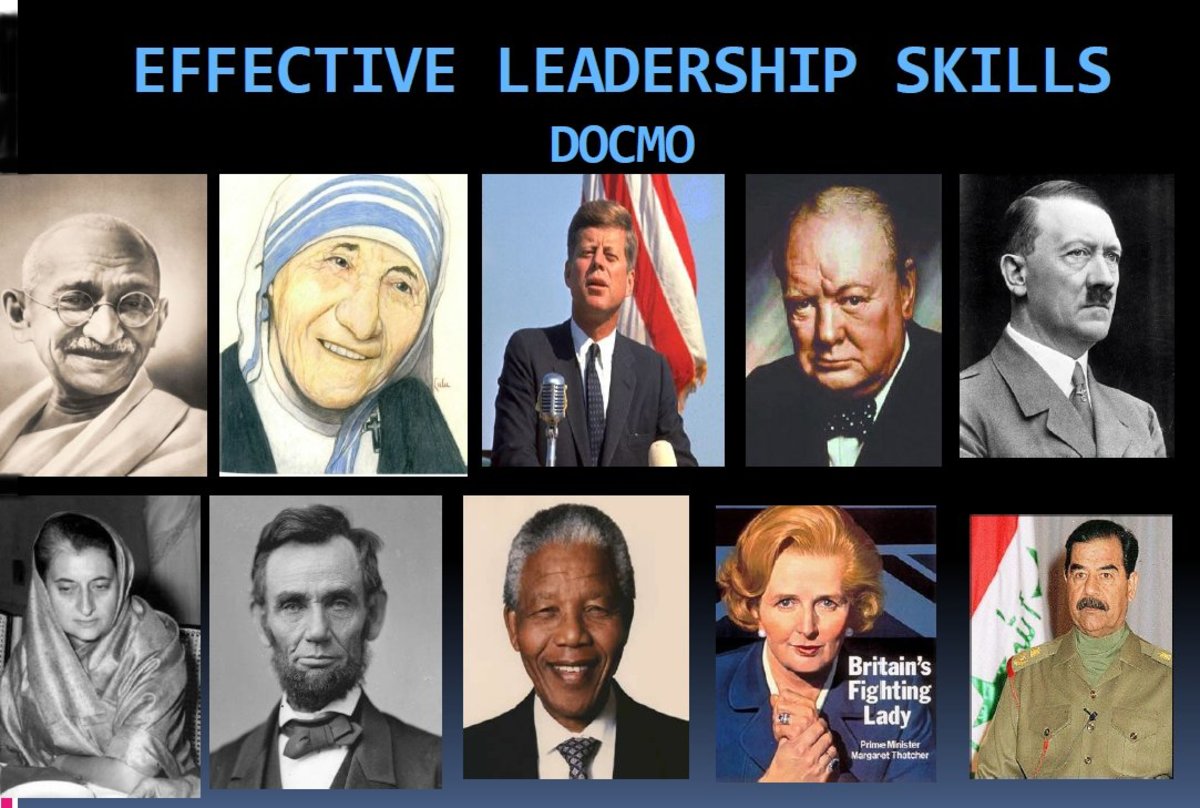What is Leadership | Leadership Skills | Leadership Styles

Leadership is the ability to persuade others to seek defined objectives enthusiastically. Leadership transforms potential into reality, it is the ultimate at that brings to success all the potential that is in an organization and its people. Leadership is so important that people have been consumed about it since the beginning of history the nature of leadership, different styles and the relationship between productivity and leadership are discussed. Leadership is a past of management, but not all of it, managers are required to flaw and organize, all leaders may not he good managers and at the sometime all managers need not be good leaders. But in general it is expected that an excellent manager will have reasonably high leadership ability. Though leadership is something a person does, it should not be considered as a mere activity. Aggressiveness and construct interaction with others will not guaren-tee good leadership, at times staying in the background keeping pressures off the group, to keep quiet so that others may talk and to be calm at times of uproar is considered as appropriate leadership.
Leaders are key human resource in any organization, we usually are of the opinion that companies compete by means of their products, but they seem to compete in reality more by means of their leaders than their products. A good leader always develops good employees and the two together develop better products, hence, a company as it requires capital and modern physical facilities, it also requires competent leaders. A successful leadership requires behaviour that unites and stimulates followers toward defined objectives in specific situations. All the three elements - leader, followers and situation are variables that affect each other in determining appropriate leadership behavior.
Leaders provide both the.task and the psychological support for their followers while the leaders provide the elements of a job, they also should stimulate to readily accept the work. Supervisors tend to supervise as they themselves are supervised. This principle applies to leaders, they serve as , role models to the followers, who tend to act in about the same way that the leaders try to do something. For example, if the leader is considerate and supportive with followers, their response would likely to be similar, however, if leader follows an apposite behavior, followers are employees may also turn opposite. Leaders are also followers in ah organization. Even the managing director reports to the board of directors in an organization. Leaders must be able to wear both hats gracefully, to be able to relate both upward and downward. Their actions need validation from higher authority just as much as they need support from followers. In formal organizations the ability to follow is one of the first requirements for a good leadership, it is the key that unlocks the door to leadership opportunities and allows the leader to keep balance with the rest of the organization.
Leadership skills
Leaders in general use three different types of skills - technical, human and conceptual. Through these skills are interrelated in practice, they can be discussed separately.
Technical skill refers to a persons knowledge and ability in any type of process of technique, Examples - the skills of Engineers, typist and tool maker, but when employees are promoted to leadership positions such skills become less important.
Human skill is the ability to work effectively with people and to build teamwork, no leader at any organizational level escapes the requirement for effective human skill and it is a major part of the leadership behavior.
Conceptual skill is the ability to think in terms of models, frame works and broad relationships, such as long range plans. This skill becomes increasingly important in higher managerial positions conceptual skill deals with ideas, while human skill concerns people and technical skill concerns with things.
Leadership styles
Leadership is practiced by leadership style, which is the total pattern of leaders' action in relation to followers. It represents their philosophy, skill and attitudes in practice. Though the leadership styles are discussed separately, but the styles are used in combination.
Positive and Negative leaders: The leaders approach the people in different ways to motivate them, if the approach emphasizes; this indicates that the leaders is using positive leadership, if he emphasizes on penalties, then the leader is considered to be employing negative leadership. The stronger penalty is, the more negative is and it applies to rewards also, what exists is a continuum ranging from strongly positive to strongly negative. Almost any manager uses both styles on the continuum every day while indulging in managing the respective organizations.
Positive leadership generally activeness higher job satisfaction and performance. Negative leadership does get acceptable performance in manage situations but at higher human costs. Negative leader in the process of getting work done, they penalize, refrimand and do not pay their workers, they display authority with a false belief of frightening every one into productivity. They are more bosses than leaders. Sometimes even competent leaders fall back upon negative leadership, because they may not always determine how to motivate an employee positively. Though it is difficult attain perfection, but the historical trend shows that managers need more positive leadership skills in order to be rated 'satisfactory'. Better employee education, greater independence and other factors have made satisfactory employee motivation more dependent on positive leadership.
Autocratic, participating and free-rein leaders: The way a leader utilises power while nonperforming his role decides on a type of leadership style. Autocratic, participative and free rein, each one of these styles have their own advantages and disadvantages. A leader tends to use all these types of leaderships over a period of time, but tends to use one in a more domination.
Autocratic leadership: Autocratic leaders centralize power and decision making in themselves. The leaders take fell authority and assume full responsibility. Leadership is typically negative, based on threats and punishment, but it can be positive, in the sense that the leader might choose to give rewards to his employees. An autocratic leader who give rewards is a benevolent autocrat. Some employees respond well to a benevolent autocrat, because they would have grown up in a culture of many authorities, some employees have expectations of such leadership, the result is they feel a certain amount of security and satisfaction with this type of leadership. The advantage of autocratic leadership is that it provides strong motivation and reward for the leader, it permits quick decisions because only one person decides for the entire group. The main disadvantage of this types of leadership is that people in general dislike it, more so when it is extreme and negative.e Frustration, dissatisfaction, fear and conflict seem to easily develop in autocratic leadership. Employees may tend to feel that they produce because they are required to, not because they are motivated to do so. in autocratic leadership the individual drive and creativity are not released.
Participative leadership: Participative leaders decentralize authority, decisions are not unilateral because they arise from consultation with follwers and participation by them. The leader and the group act as a social unit, employees are informed about conditions which affect their jobs, this in turn encourages them to express their ideas and even suggest on certain improvements in the functioning of the organization.
Free-rein leadership: Free-rein leaders avoid power and responsibility. They depend mostly on the group to establish its own goals and manage its own problems. Group members traub themselves and provide motivation for themselves. Free-rein leadership ignores the leaders contribution in much the same way as the autocratic leadership ignores the contribution of the group. In this style of leadership the different units of an organization to proceed at cross-purposes and it can degenerate into chaos. Hence, it is not used as a dominant style and is hateful in those situations where a leader can leave a choice entirely to the group.
With in the industrial organizations apart from the different levels of management playing the leadership roles with in their own area of operation, we find the supervisor playing a unique leadership role. Supervisors occupy positions at the lowest management level in organizations. They supervise non management employees, while higher managers primarily supervise other managers below them. It clearly indicates that it is the supervisors which are the point of direct contact with the workers but not the managers. Supervisors need to be leaders, just as the managers do perform the leadership roles.
In any organizational situation the style of leadership and productivity are directly related, often it has been proved that the participative leadership which shows concern for the worker's over all development has always resulted in higher productivity in the organizations. An effective management which has adopted efficient leadership styles has always been responsible to motivate their workers towards higher productivity.






